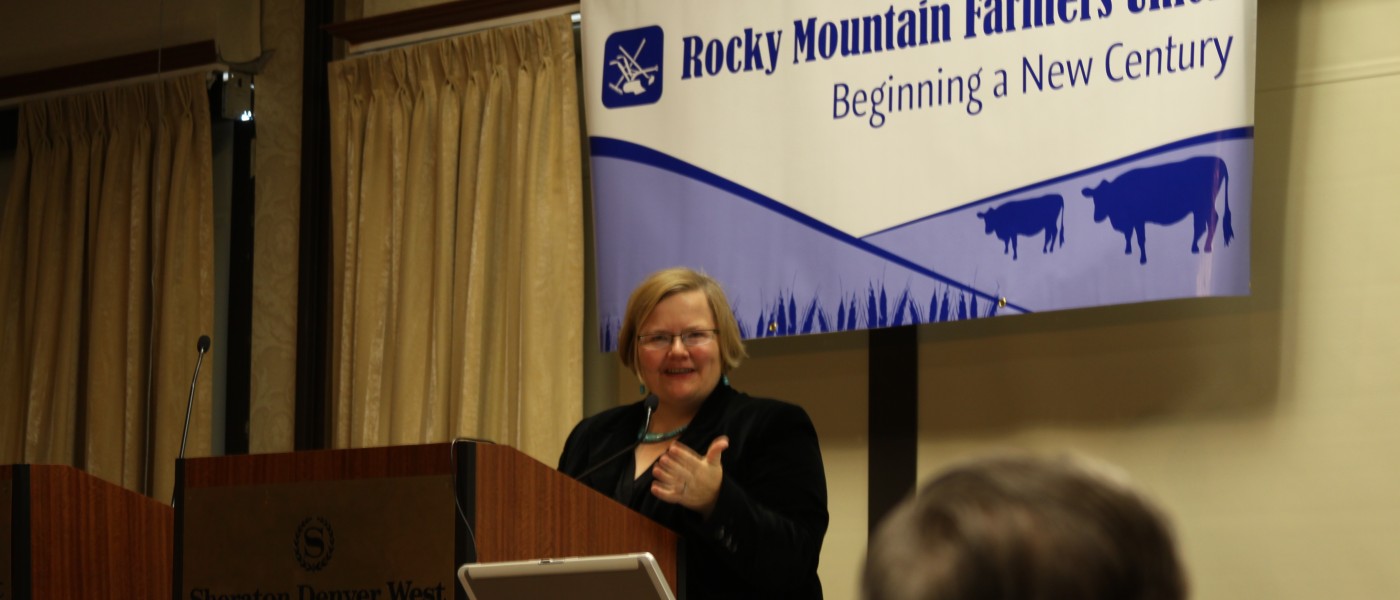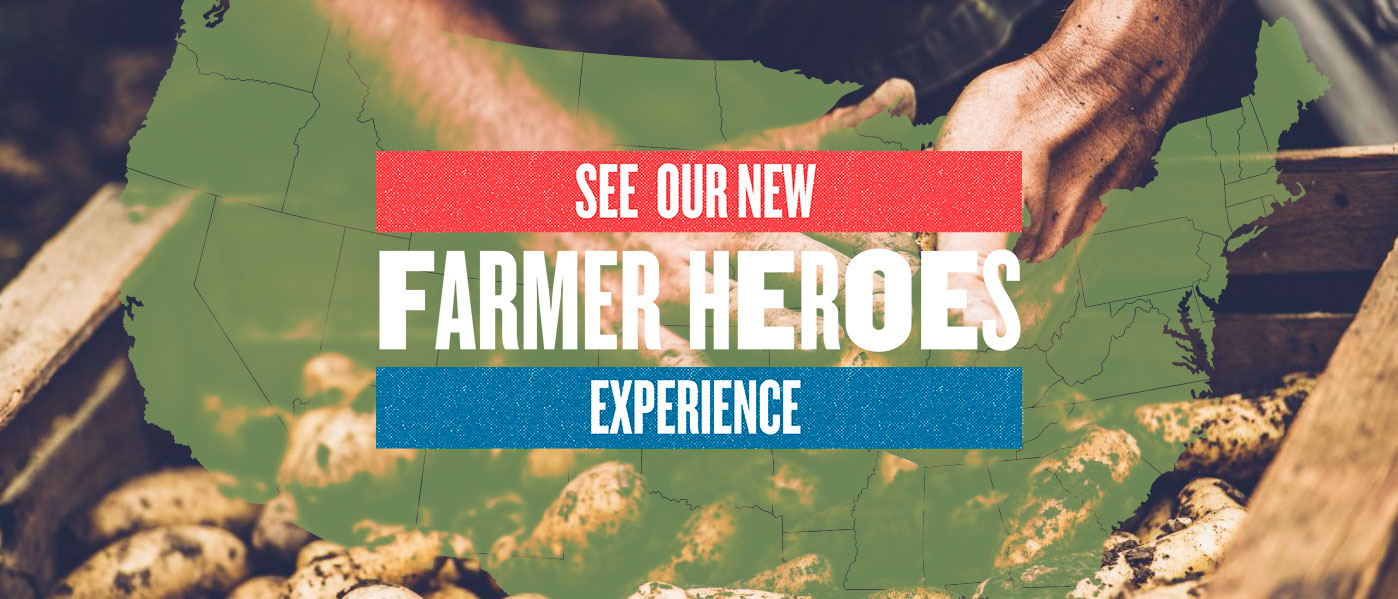Columbia, MO
Mary Hendrickson speaking at the Rocky Mountain Farmers Union. Photo by Cynthia Torres.
Mary Hendrickson grew up on her parent’s small, diversified farm in Nebraska. As a 4-H and Future Farmer of America (FFA) member in high school and college, she raised hogs and sheep, and sold them to Farmland Foods, which was a cooperative at the time. While her brother still farms, Mary has broadened her focus to the problems in the agricultural system as a whole and how farmers can thrive in a system dominated by corporate interests.
Mary currently serves as an Extension Associate Professor at the University of Missouri in the Rural Sociology Department, as well as Director of the Food Circles Networking Project and Associate Director of the Community Food Systems and Sustainable Agriculture Program. Mary has focused much of her attention over the years on consolidated agricultural markets and competition—two things that greatly impact family farmers (click here to read our Ask Farm Aid column for more information).
Walking through a grocery store, customers are given several options for who to buy their chicken or beef from. Many brands have the word “family” or “farm” in their name, but upon closer inspection often the label will reveal, in small print, that the “farm” is actually owned and operated by one of only a handful of large companies. “It is very serious,” said Mary. “We like to think that we have a great deal of choice but when you look at who actually makes things, you will see there are actually very few companies in charge.”
For the average consumer, this means less choice. “What the average American doesn’t know is that decisions about food…are not made by individuals,” said Mary. “Those decisions are made by the biggest firms that produce the most product.” In other words, the ones who have the money have the power.
Mary works with farmers to help them set up and sell in alternative markets to give both farmers and consumers another choice. “Farmers have a hard time figuring out how to connect with you [the consumer],” said Mary. To help, she creates reports for farmers unions, analyzing what is happening in the agricultural world and how farmers can best compete.
“Some farmers can do well in the commodity system,” said Mary. “They just need to find other farmers to work with.” By pooling their crops, they can compete with larger and more industrial farming operations.
Mary went on to say that when it comes to working in an alternative market a farmer needs to look at what they are good at producing and start from there. These alternative markets can be something as simple as selling at their local farmers market and letting customers know they grow organic or heirloom crops; or something more complex such as starting a cooperative or selling to a targeted ethnic market that requires special handling of their meat products. Farmers have always known there is power and strength in numbers, and now they’re finding out that alternative markets let them avoid going up against the strengths of the corporate dominated global food system.
That food system is far from a competitive market. As of 2007, according to research done by Mary and Bill Heffernan, the top four companies in the beef industry control 83.5% of the market. “In standard antitrust theory, a market stops being competitive when this number reaches 40%,” said Mary.
Pork, broilers (chicken) and turkeys are all well above this cut-off at 66%, 58.5% and 55%, respectively. And most of these numbers have been consistently rising with no sign of slowing. JBS S.A., a multinational beef producer, has been buying up companies in the four biggest beef-producing countries in the world – Brazil, Argentina, the US and Australia – consolidating and solidifying its position as the number one beef producer in the world.
Mary’s work exploring alternative markets is critical for farmers who are still waiting for the government to uphold antitrust laws and investigate companies that have a stranglehold on their industries. Only recently have there been signs that the government is going to seriously explore corporate concentration in agriculture. Last August, the Department of Justice and USDA announced they would begin to look at economic consolidation and scheduled joint public workshops throughout the coming year to explore and discuss competition issues.
“In a consolidated market, one buyer has all of the influence,” said Mary. Conversely, in a competitive market, no single buyer has all the influence and there is competition that allows for fair prices and an equal chance for all sellers. “This is really what all of our farmers want,” said Mary. “They want the ability to compete.”



